If you’re looking to improve your circulation, massaging your feet is a great place to start! This step-by-step guide will show you how to massage feet for circulation, helping you to relax and reduce tension in the feet, as well as improving your overall circulation. With these simple steps, you can give yourself an invigorating and therapeutic foot massage that can help you feel better and have better circulation.
Contents
What is Foot Massage?
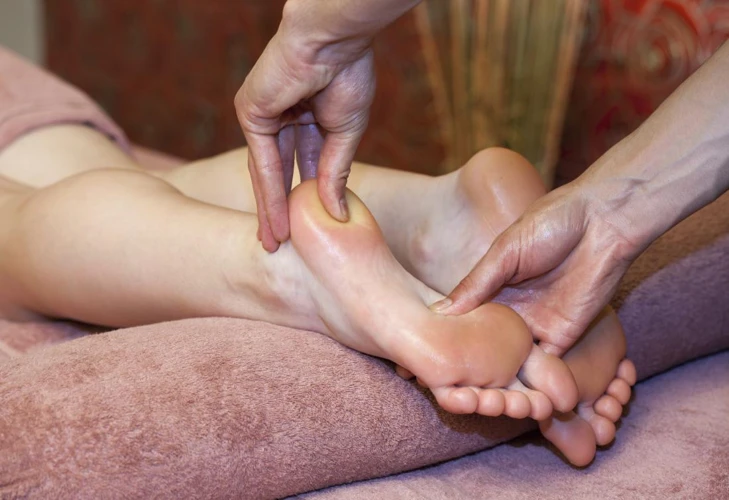
Foot massage is a type of massage therapy that focuses on the feet and lower legs. It involves applying pressure to certain points on the feet, as well as stretching and kneading the muscles and connecting tissue. This type of massage helps to improve circulation and reduce pain in the feet and lower legs. It can also be used to help relieve stress and tension, improve mood, and promote relaxation.
Foot massage is a great way to improve circulation and increase blood flow to the feet. Massage helps to stimulate the nerves, increase blood flow, loosen tight muscles, reduce inflammation, and improve overall circulation. This can help to reduce pain, improve range of motion, and help to prevent and treat medical conditions such as diabetes, arthritis, and plantar fasciitis.
| Benefits of Foot Massage | How to do Foot Massage for Improved Circulation |
|---|---|
| Reduce pain | Gently massage the feet with the thumbs and fingers |
| Improve range of motion | Apply pressure to specific points on the feet |
| Reduce inflammation | Knead, stretch, and rub the muscles and connective tissues |
| Stimulate nerves | Apply gentle stroking motions |
| Increase blood flow | Use essential oils or lotions for extra relaxation |
| Improve mood | End the massage with a gentle foot massage |
| Reduce stress and tension | Encourage the patient to take slow, deep breaths |
Benefits of Foot Massage for Improved Circulation
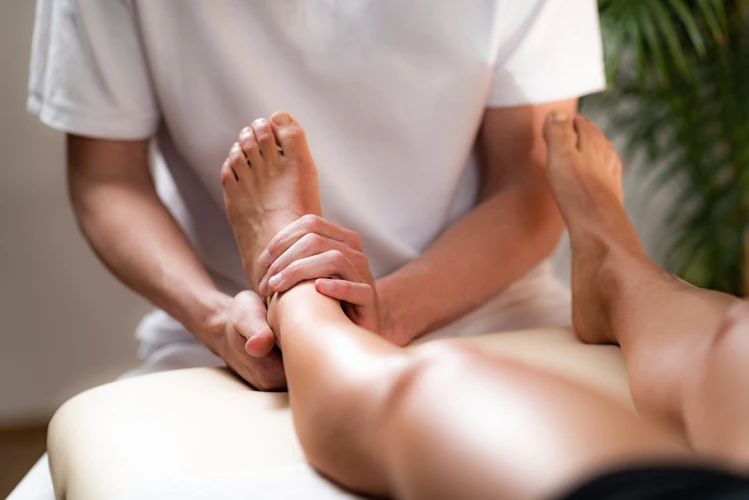
- Increased Oxygen Levels: A foot massage increases circulation, resulting in increased oxygen levels in the body.
- Lowers Blood Pressure: A foot massage can help reduce the symptoms of hypertension by regulating the body’s blood pressure.
- Relieves Stress: Massaging the feet helps relax the whole body and ease the built-up tension, resulting in a sense of calm and peace.
- Reduces Swelling: Foot massage helps to reduce swelling and inflammation by stimulating the lymphatic system and improving circulation.
- Reduces Pain: Massaging the feet can help relieve pain in the feet and joints, as well as reduce the symptoms of arthritis.
- Improves Sleep: Foot massage can help relax the body and mind, leading to improved sleep quality.
Preparation for Foot Massage
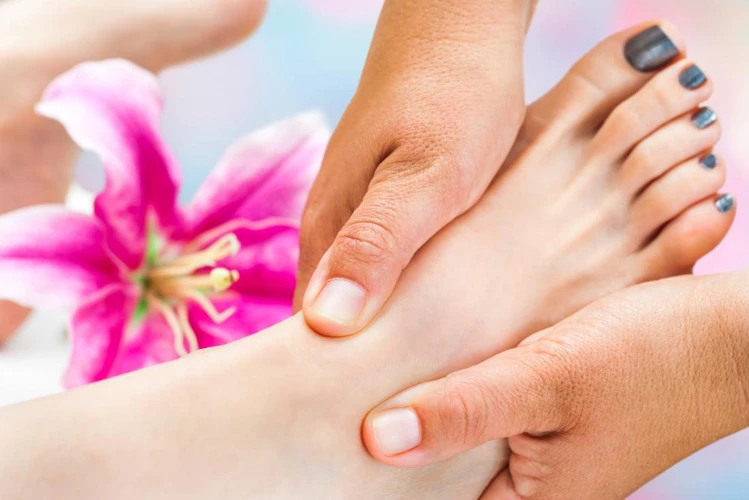
Gather Materials: Gather the materials needed for a foot massage, such as massage oil or lotion, a basin of warm water, a towel, and a comfortable chair or bed.
Clean Feet: Before beginning the massage, it is important to make sure the feet are clean. Soak the feet in warm, soapy water for 10 minutes. Make sure to remove any dirt or dead skin.
Dry Feet: After soaking, pat the feet dry with a clean towel. Make sure to remove any excess moisture to avoid slipping while massaging.
Apply Oil or Lotion: Apply massage oil or lotion to the feet. This will help the massage be more comfortable and relaxing.
Position Person: Have the person receiving the massage sit in a comfortable chair or lie down on a bed. Make sure their legs are in a comfortable position, with the feet in easy reach of the massage therapist.
Step-by-Step Instructions for Massaging Feet for Improved Circulation
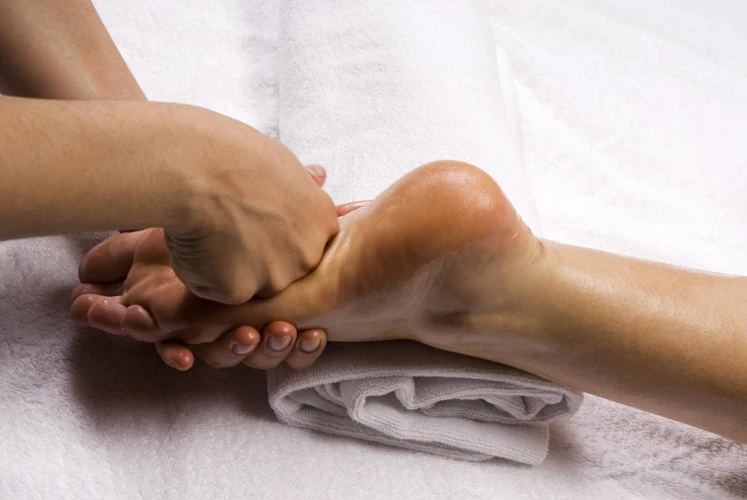
Begin with the Toes
Start by using your thumb and index finger to give your toes a gentle squeeze. Make sure to massage each toe individually.
Move to the Middle of the Foot
After squeezing the toes, move to the middle of the foot and use your thumb to press firmly into the sole of the foot. This will help to improve circulation and reduce any tightness in the foot muscles.
Massage the Heel
Using the same technique as the middle of the foot, gently press into the heel of the foot. Move your thumb in a circular motion to help loosen any tightness in the muscles.
Move to the Top of the Foot
With your thumbs, press firmly into the top of the foot. Again, move your thumb in a circular motion to help improve circulation and reduce any tightness.
Massage the Ankle
Using your thumb and index finger, gently massage the top and sides of the ankle. This will help to improve circulation and reduce any tightness in the ankle muscles.
Finish with Gentle Strokes
Once you’ve finished massaging the ankle, finish with gentle strokes across the top of the foot and the toes. This will help to relax the muscles and improve circulation.
Self-Foot Massage for Improved Circulation
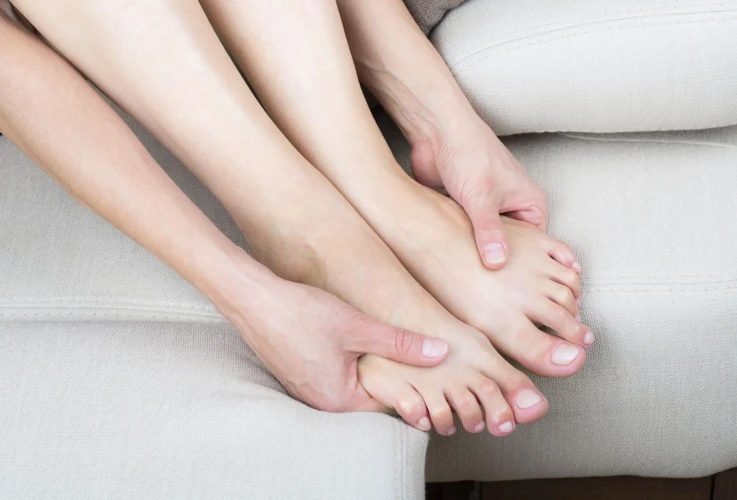
- Increases Blood Flow: Foot massage helps to increase blood circulation, which in turn helps to improve overall health. This is especially important for those who suffer from poor circulation or who have difficulty walking.
- Reduces Tension: Massaging the feet can help to relieve tension in the body, reduce stress, and help to improve sleep quality.
- Boosts Energy: Foot massage is known to boost energy levels by providing relief from stress and tension. This can help to improve overall productivity and performance.
- Alleviates Pain: Foot massage can help to alleviate pain in the feet, ankles, and other parts of the body. This is especially beneficial for those suffering from conditions such as arthritis or plantar fasciitis.
- Relaxes Muscles: Foot massage helps to relax the muscles in the feet, which can help to reduce inflammation and pain.
- Improves Flexibility: Foot massage helps to improve flexibility in the feet and ankles, which can help to improve overall mobility.
Common Reasons for Improving Circulation
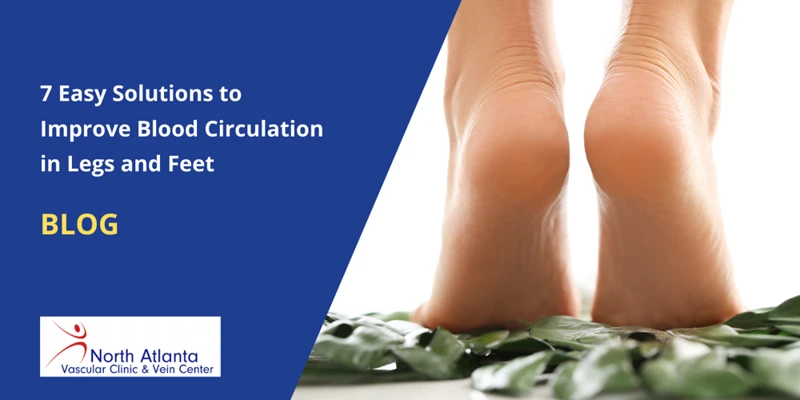
Poor circulation can lead to a number of health issues, including fatigue, cramps, numbness, and tingling. Massaging the feet can help improve circulation, providing many benefits. Here are some of the most common reasons to improve circulation through foot massage:
- Reducing inflammation and swelling
- Improving nerve function
- Increasing mobility and flexibility
- Reducing pain, stress, and tension
- Improving digestion and elimination
- Boosting immunity and overall health
Tips for a Successful Foot Massage
Temperature: Use warm oil or lotion to massage the feet. This will help relax the muscles and make the massage more comfortable.
Pressure: Use light to medium pressure when massaging the feet. Too much pressure can cause discomfort and even pain.
Techniques: Use different massage techniques to achieve different results. For example, kneading can help to relax the muscles while rubbing can help to increase circulation.
Duration: Massage the feet for 10-15 minutes. This is enough time to help relax the muscles and improve circulation.
Frequency: Try to massage the feet at least once a week. This will help keep the feet relaxed and improve circulation.
Table:
| Technique | Pressure | Duration | Frequency |
|---|---|---|---|
| Kneading | Light to Medium | 10-15 Minutes | At least once a week |
| Rubbing | Light to Medium | 10-15 Minutes | At least once a week |
Frequently Asked Questions
Are there any risks associated with foot massage?
Yes, there are risks associated with foot massage. Before engaging in any type of massage, it is important to be aware of the possible risks. These include:
- Allergic reactions: People may be allergic to certain oils, lotions, and other products used in massage.
- Infections: If the massage therapist does not follow proper hygiene protocols, it is possible to spread bacterial or viral infections.
- Tissue damage: If the massage therapist applies too much pressure or is not trained properly, they can cause damage to the tissues of the feet.
- Nerve damage: If the massage therapist applies too much pressure or uses incorrect techniques, they can cause nerve damage in the feet.
- Blood clots: If the massage therapist applies too much pressure or does not use appropriate techniques, it is possible to cause blood clots in the feet.
It is important to speak with a doctor before engaging in any type of massage, especially if you have a medical condition. Additionally, it is important to make sure that the massage therapist has the necessary training and is using proper hygiene protocols.
How Often Should I Massage My Feet for Improved Circulation?
It is recommended to massage your feet for improved circulation at least 3-4 times a week for a minimum of 10 minutes per session. However, you can adjust the frequency and duration of your foot massage routine depending on how your body responds to it. Make sure to start out slowly and gradually increase the intensity as you progress.
What Types of Oils are Best to Use for Foot Massage?
The best oils to use for foot massage are those that have a high monounsaturated fat content. Examples of these include olive oil, coconut oil, almond oil, and avocado oil. These types of oils are beneficial for foot massage because they help to moisturize the skin and improve circulation. They also have anti-inflammatory properties that help to reduce swelling and pain. Additionally, essential oils can be added to these base oils to create a relaxing and therapeutic massage.
Does Foot Massage Reduce Swelling in the Feet?
Yes, foot massage can reduce swelling in the feet. It encourages increased circulation of blood and lymphatic fluids, which can help reduce swelling. Foot massage can also help to reduce tension and improve mobility in the feet, which can help reduce the build-up of fluid.
Steps to Massage Feet to Reduce Swelling:
- Start by gently massaging the feet with your thumbs using circular or up-and-down motions.
- Move up the foot, massaging the muscles along the arch, the toes, and the ankle.
- Apply deeper pressure with your thumbs if needed.
- Use a light pressure with your fingertips to massage the top of the foot.
- Finish the massage by gently kneading the entire foot.
It is important to be mindful of any areas of pain or discomfort, as it may indicate an underlying injury or condition. If you experience any pain or discomfort, it is best to consult a medical professional before attempting to massage the feet.
Can I use a foot massager for improved circulation?
Yes, using a foot massager is a great way to improve circulation in your feet. Foot massagers can be used to massage, knead, and roll your feet, which helps to increase blood flow and reduce tension. Here are some steps to follow when using a foot massager for improved circulation:
- Choose a foot massager that has adjustable settings for pressure, speed, and intensity.
- Start with a low intensity setting and gradually increase the pressure as needed.
- Apply pressure to your feet in a circular motion, concentrating on the areas where you feel tension.
- If you feel discomfort or pain, reduce the pressure or intensity.
- Focus on the soles of your feet and the area between your toes.
- Massage each foot for around 10 minutes.
- Finish the massage by rubbing your feet with a cloth or towel.
Using a foot massager for improved circulation can help to reduce pain and stiffness in your feet, and can also help to improve overall health and wellbeing.
Conclusion
The simple act of massaging feet can help improve circulation and reduce pain in the feet and legs. By following the steps outlined in this guide, you can give yourself or someone else a relaxing and beneficial foot massage. With regular foot massages, you can enjoy the benefits of improved circulation and better overall foot health.
References
- Barber, M. (2020). Foot Massage for Circulation. Verywell Health.
- The Institute of Integrative Health. (2019). How to Massage Feet for Improved Circulation. Institute of Integrative Health.
- Wikipedia contributors. (2020). Foot Massage. In Wikipedia, The Free Encyclopedia. Retrieved 17 August 2020.

